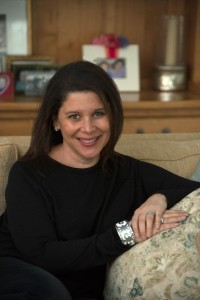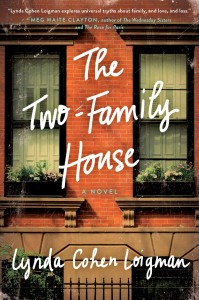Reality Bits: Fact in Family Fiction
 One week after my debut novel was published, one of my father’s cousins called me. I hadn’t spoken to her for almost a decade, but she had seen my book in the new fiction section of her local bookstore. We talked for a while, and she asked whether the story was about some of our relatives. The names she mentioned belonged to people I have never heard of, people who had passed away long before I was born. No, I assured her, the story was not about them.
One week after my debut novel was published, one of my father’s cousins called me. I hadn’t spoken to her for almost a decade, but she had seen my book in the new fiction section of her local bookstore. We talked for a while, and she asked whether the story was about some of our relatives. The names she mentioned belonged to people I have never heard of, people who had passed away long before I was born. No, I assured her, the story was not about them.
A few days later, I received an email from another cousin. She wanted to know whether the Mort in the book was named for a certain Mort in our family, an uncle from several generations back. If I ever knew that particular Mort, I had long since forgotten him. No, I explained, my character was not named for him.There have been several other inquiries, not just from relatives, but from friends and even strangers, all wanting to know whether the plot and the characters from The Two-Family House are based in fact.
If I had written a post-apocalyptic thriller, I don’t think people would be asking. But my story is old-fashioned and familiar, so people do ask.The answer I give is always the same: although the setting is drawn from my mother’s childhood home in Brooklyn, the characters are fictitious, and the story is entirely of my own creation. But the more I am questioned, the more I keep thinking – in a novel about families, what does my answer really mean? Is my novel pure fabrication? If my Mort is not based on the distant relative I’d forgotten, isn’t he based on someone?
The truth is, Mort is based on no one in particular, and a hundred men all at once: an enthusiastic high school teacher; a series of grumpy waiters at a New York deli; a grandfather I barely knew; a lawyer I once worked for – intimidating to most, but endearing to me; a half dozen taxi drivers; my childhood pediatrician; the men who used to gather around my father at our synagogue and the ones who used to call our house when they needed him for minyan. Mort is a product of all of these men and more. The same is true, of course, for the women in the story. In the weeks since my novel has been out in the world, I have lost track of how many people have asked whether Helen is based on my mother or grandmother. She is not, but I would be lying if I said I they were absent from my mind while writing.
The same is true, of course, for the women in the story. In the weeks since my novel has been out in the world, I have lost track of how many people have asked whether Helen is based on my mother or grandmother. She is not, but I would be lying if I said I they were absent from my mind while writing.
Helen’s cinnamon cake is my grandmother’s recipe. Her trip to the drugstore for lipstick stems from my mother’s stories about the way her lips swelled up when she was pregnant. “I’d go through a tube of lipstick every week,” my mother used to tell me, laughing as she remembered.
As writers, we are relentless observers. We have long memories, not just for people and places, but for the smallest details – an eyebrow, a taste, the sound of a footstep or the moment of hesitation before a laugh. In the same way that actors are taught to draw from real-life experiences in order to be more believable on stage, we teach ourselves to store emotions and sensations for future use. We collect and recycle not only the most important, but also the most mundane moments of our lives. We do so because we never know what the page might ultimately require.
For me, writing a family story means that bits and pieces of my “real life” are sprinkled throughout the narrative. Some pieces come from actual objects – my mother’s tin recipe box, for example, is the model for Rose’s. Some stem from personal experiences – Judith’s frustration with her mother’s anxiety regarding her whereabouts is something I struggled with as a teenager.
Some bits, though pure conjecture, are rooted in reality – Helen’s reflections on Harry are thoughts I always imagined a high school friend’s mother must have had. And some bits are born of my own deepest fears – Rose’s frustration with Teddy for having outgrown his new shoes is the kind of bad parenting moment I have regular nightmares about. With so many factual pieces in play, is it still proper for me to claim that I somehow made up my story from scratch?
As creative and inventive as writers may be, none of us are Gods. We can’t make something from nothing. The worlds we invent bear striking similarities to worlds we already know, and our characters are shaped by the remnants of real people – they do not spring fully-formed like Athena from Zeus’s skull.
So Mort is not my uncle, Helen is not my grandmother, and The Two-Family House is not a true story. But I could not have created them in the absence of my own personal history. I can only hope that my warehouse of memories has been put to good use, and that it has somehow provided a layer of authenticity. Without question, my book is fiction, but I hope my bits of reality have also made it genuine.
—
>Lynda Cohen Loigman grew up in Longmeadow, MA. She received a B.A. in English and American Literature from Harvard College and a J.D. from Columbia Law School. She is now a student of the Writing Institute at Sarah Lawrence College, and lives with her husband and two children in New York. She is a failure at enforcing reasonable bedtimes. THE TWO-FAMILY HOUSE is her first novel.
Website | Facebook | Twitter | Amazon
Category: Contemporary Women Writers, On Writing

























I loved this article and experience has taught me many of the same lessons. A finished pot may not look like a lump of clay but be assured it is made up of all that is within the lump. Writing is like stripping layers of reality to find essences. Many times these essences are buried. As we write the characters and the narrative reveal themselves. Writing is an act of revelation and the seeds of our story are always based upon the truth buried in lives of the past. Great article.
Paul